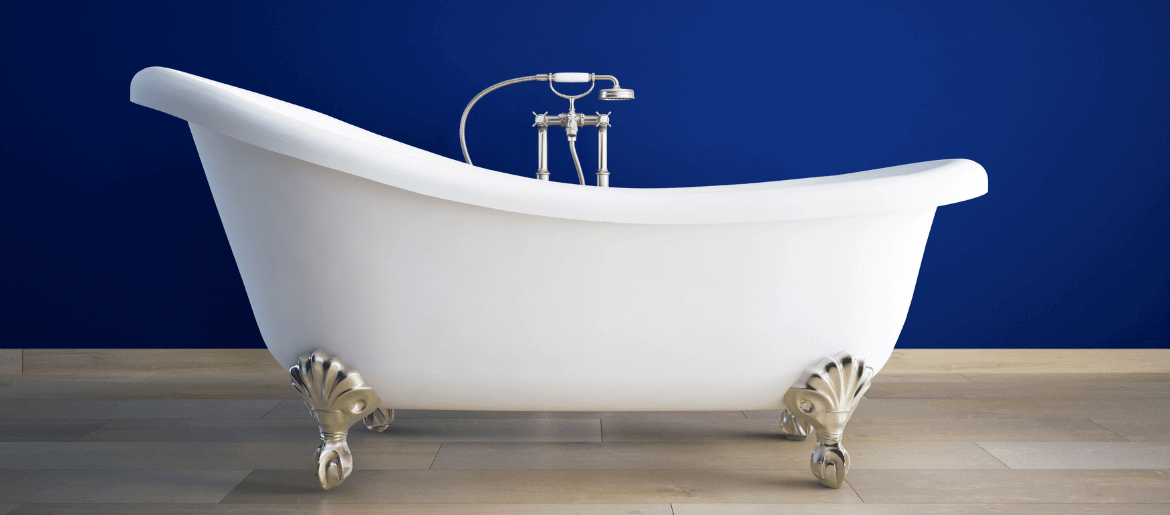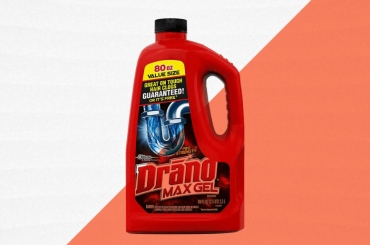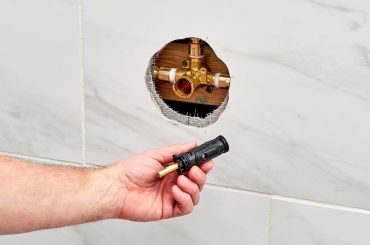If you’re not sure what kind of bathtub you have, don’t worry there are a few ways to tell. If it’s a newer tub, it’s likely made of either porcelain-enameled steel or enameled cast iron.
If it’s an older tub, it may be made of acrylic. Here’s a quick guide on how to tell what your bathtub is made of.
How To Tell What Your Bathtub Is Made Of?
If you’re not sure what your bathtub is made of, there are a few ways to find out.
- Look at the label: One way is to look at the label on the tub. Many bathtubs will have a label that indicates what materials were used in their construction.
- Test with a magnet: If you still can’t determine what your tub is made of, you can try doing a test with a magnet.Metals such as steel and iron will be attracted to magnets, so if your bathtub is made of one of these materials, the magnet should stick to it. If the magnet does not stick, then your tub is likely made of another material such as acrylic or fiberglass.
- Check for weight: Heavier materials like cast iron are going to be much heavier than lighter options like acrylic.
- Look at the surface: If the surface is smooth and porcelain-like, it’s probably enameled steel. If it’s textured or rubbery, it might be acrylic.
- Check for heat retention: If the water in your tub stays hot for a long time, it’s likely made from cast iron or another material that retains heat well.
- Consider the price: More expensive bathtubs are usually made from better materials that will last longer. Cheaper tubs are more likely to be made from lower-quality materials.
- Ask a professional: Finally, a way to determine what your bathtub is made of is to ask a professional such as a plumber or contractor. They should be able to tell you what materials were used to make your tub.
Once you know what materials your tub is made of, you can research the best cleaning methods for that type of tub.
Types of Bathtubs & Their Materials
There are many types of bathtubs available on the market today. Here is a look at some of the most popular types of bathtubs and their material:
- Freestanding bathtubs: These tubs are not attached to any walls, making them ideal for small bathrooms or spaces where you want to create a more open feel. Freestanding tubs come in a variety of materials, including acrylic, cast iron and stone.
- Clawfoot bathtubs: These tubs are designed with feet that resemble those of a clawed animal, hence the name. Clawfoot tubs are typically made from cast iron or porcelain and are often considered to be more of a decorative piece than a functional one.
- Soaking tubs: Soaking tubs are designed for prolonged bathing, as they typically hold more water than other types of tubs. Soaking tubs are made from materials including cast iron, copper, stone and enameled steel.
- Jacuzzi bathtubs: Jacuzzi bathtubs are designed for two people and feature jets that massage the body. Jacuzzis are typically made from acrylic or fiberglass and can be either freestanding or built-in.
- Whirlpool bathtubs: Whirlpool bathtubs are similar to Jacuzzis but they feature smaller jets that create a whirling effect in the water. These tubs are perfect for a relaxing massage.
- Air baths: Air baths are designed to provide a gentle massage with the help of bubbles that are generated by air jets. Air baths come in a variety of materials including acrylic, fiberglass and gel coat.
How to identify the material of your bathtub?
There are a few key ways to identify the material of your bathtub.
- First, you can look at the overall construction of the tub. If it is made of metal, it is likely made of steel or iron.
- If it is made of plastic, it is likely made of acrylic or fiberglass.
- You can also look at the surface of the tub. If it is smooth, it is likely made of porcelain or enamel. If it is rough, it is likely made of cast iron or steel.
- You can also look at the color of the tub. If it is white, it is likely made of porcelain. If it is green, it is likely made of enamel. If it is brown or black, it is likely made of steel or iron.
Pros and Cons of each type of bathtub material
Pros of cast Iron
- Very durable and will last a long time with proper care.
- Heavy, so it won’t move around when you’re using it.
- Hold heat well, so your bath will stay nice and warm for a long time.
Cons of Cast Iron
- Takes longer to heat up than other materials.
- Can be more expensive than other types of tubs.
- Can be difficult to clean because it is non-porous.
- Heavy and difficult to install, can rust over time.
Pros of Acrylic
- Lighter weight than cast iron and steel.
- Shatter-resistant.
- Weather resistant.
- Easy to clean and maintain.
Cons of Acrylic
- Can scratch and yellow over time.
- Not as heat resistant as some other materials.
Pros of Stainless Steel
- Durable and long-lasting.
- Resistant to scratching and staining.
- Easy to clean.
- Non-porous, so it won’t absorb food odors.
Cons of Stainless Steel
- Heavier than some other materials.
- Can dent and ding.
Pros of Enameled Steel
- Excellent corrosion resistance.
- The enamel coating provides a barrier between the steel and the environment, preventing rust and other forms of corrosion from attacking the metal.
Cons of Enameled Steel
- Tends to chip and crack more easily than cast iron.
- It is less expensive than cast iron but still quite durable.
Pros of Fiberglass
- Lightweight.
- Strong and durable.
- Resistant to corrosion, UV light and extremes of temperature.
Cons of Fiberglass
- Can be damaged by sharp objects.
- Tends to yellow over time.
- Can crack.
Best Material For Your Bathtub
There are a few things to consider when you’re trying to figure out which material is best for your bathtub.
- First, think about what kind of look you’re going for in your bathroom. If you want something classic and timeless, then porcelain or enameled steel is probably your best bet.
- If you’re more concerned with durability and easy maintenance, then fiberglass or acrylic might be a better choice.
- Another thing to consider is how much you’re willing to spend on your bathtub.
- Cast iron and enameled steel are usually the most expensive options, followed by fiberglass and acrylic. Stainless steel is usually the least expensive material but it’s also the heaviest and can be more difficult to install.
- Ultimately, the best material for your bathtub is the one that best fits your needs and budget.
FAQs – What Your Bathtub Is Made Of?
How do you tell if I have a fiberglass or acrylic tub?
If you are unsure whether your tub is fiberglass or acrylic, there are a few ways to tell. Fiberglass tubs are typically lighter in weight than acrylic tubs. They may also have a textured bottom, whereas acrylic tubs usually have a smooth bottom.
Another way to tell the difference is by looking at the seams. Fiberglass tubs will have seams that are visible and feel rough to the touch, whereas acrylic tubs will have seamless construction.
How can I tell if my tub is porcelain or enamel?
Porcelain and enamel tubs are usually made of cast iron or steel. They are typically very sturdy and durable. One way to tell the difference between porcelain and enamel is by looking at the finish. Porcelain tubs will have shiny, smooth finishes, while enamel tubs will have a more matte finish.
Another way to tell the difference is by looking at the color. Porcelain tubs are typically white or off-white, while enamel tubs can be found in a variety of colors.
Can fiberglass tubs be refinished?
Yes, fiberglass tubs can be refinished. However, it is important to note that the results may not be as long-lasting as with other types of tubs.
Fiberglass is more susceptible to damage and wears over time, so the finish may not last as long. If you are considering refinishing a fiberglass tub, be sure to consult with a professional to get the best results.
Will bleach damage the fiberglass tub?
Yes, bleach can damage the fiberglass tub as it is a corrosive substance.
Fiberglass is a porous material and can absorb the bleaching agent, which can lead to deterioration and discoloration.
If you must use bleach on a fiberglass tub, be sure to dilute it heavily and rinse the tub thoroughly afterward.
You may also want to avoid using bleach on colors, as it can cause fading.
Conclusion
There are a few key ways to tell what your bathtub is made of.
- First, look at the color and texture of the tub.
- Feel the weight of the tub.
- Third, tap on the surface of the tub.
- Finally, consult a professional if you’re still unsure.
There are many different types of bathtub materials on the market and each has its own set of benefits and drawbacks.
Hopefully, this article has helped you to understand a little bit more about the various options available and how to identify what your bathtub is made of.
With this knowledge in hand, you can make a more informed decision about which type of tub is right for you.





